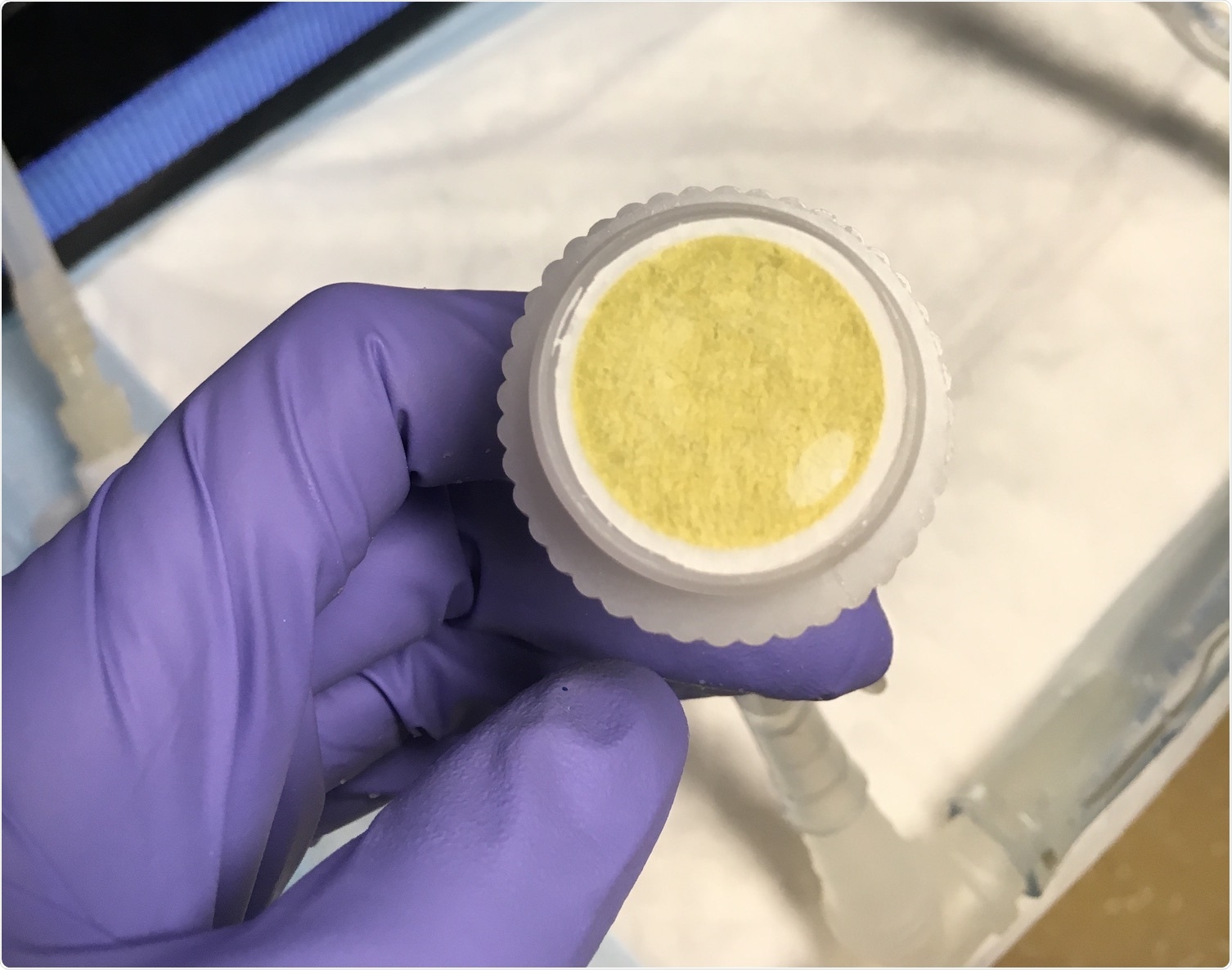Scientists from the University of California, Irvine, analyzed gains and losses in the genes of phytoplankton samples gathered from all major ocean regions to develop the most refined and highest-resolution map that shows where these photosynthetic organisms either survive or are forced to adapt to restricted amounts of main nutrients, nitrogen, iron, and phosphorus.

UCI researchers collected phytoplankton samples from ocean regions around the world. The organisms are strained in a filter as pictured here, frozen onboard the research vessel and then brought to a laboratory on the UCI campus where they are analyzed to determine the nutrient content of particulate organic matter in the surface ocean. Image Credit: Alyse Larkin, UCI.
Within the framework of the new Bio-GO-SHIP initiative, the UCI researchers made eight deployments on six different research vessels. They spent 228 days at sea in the Pacific, Atlantic, and Indian oceans. They produced almost 1,000 ocean metagenomes from 930 locations across the world, with a 26.5 km (about 16.5 miles) average distance between the collection points.
Research published recently in Science describes how the UCI researchers used enormous amounts of information embedded in microbial genes—particularly from the phytoplankton Prochlorococcus species—as a biosensor of the health and productivity of oceans.
Oceanographers in this field are much interested in gaining insights into how these organisms adapt to “nutrient stress”—the battle to find or use the necessary substances required to grow and reproduce.
Phytoplankton are foundational to the marine food web, and they are responsible for as much as half of global carbon dioxide fixation on an ongoing basis, so the health and distribution of these organisms is very important. The knowledge gained on these voyages will help climatologists make more sound predictions about the role of phytoplankton in regulating carbon stocks in the atmosphere and ocean.”
Adam Martiny, Study Senior Co-Author and Professor of Earth System Science, University of California, Irvine
Microbial phytoplanktons live in huge populations and exhibit very quick life cycles. Therefore, the team proposes that variations in community composition and genomic content can offer an early warning related to environmental transformations and do so much quicker than by just studying ocean physics and chemistry.
Nitrogen, phosphorus and iron limitation in many surface ocean regions is nearly impossible to detect through chemical analysis of water samples; the quantities of these elements are just too low. But quantifying shifts in Prochlorococcus genes involved in the uptake of major nutrients, and combinations thereof, provides a strong indicator of the geography of nutrient stress.”
Lucas Ustick, Study Lead Author and Graduate Student in Ecology and Evolutionary Biology, University of California, Irvine
The researchers indicated that all Prochlorococcus genomes feature a specific gene that enables the phytoplankton to directly absorb the inorganic phosphate available freely in seawater. However, the shortage of this compound leads the phytoplankton to adapt by gaining a gene that allows the cells to absorb dissolved organic phosphorus, which can be identified in their genome.
Moreover, the team analyzed several other examples of genetic adaptations for varying levels of nitrogen, phosphorus, and iron in the environment to observe the sorts of trade-offs that phytoplanktons produce continuously. The result was a global map of nutrient stress. The team could also find regions in which phytoplankton experience co-stress that involves two or more elements, where one of them is virtually always nitrogen.
The researchers’ study showed that the North Atlantic Ocean, Mediterranean Sea, and the Red Sea are regions of higher phosphorus stress. There is an extensive occurrence of genotypes adapted to nitrogen stress in what are called oligotrophic regions, where oxygen is high and nutrients are low. Here, the results of the research sampling indicate extensive adaptation to iron stress.
A study of phytoplankton genotypes confirmed established biogeographic patterns of nutrient stress predicted by various methods. However, it also unraveled previously unidentified regions of nutrient stress and co-stress.
Before their metagenomic analysis, the team had very little insights into nutrient stress in the Indian Ocean, but their study helped to bridge several gaps. Now, the researchers know the Arabian Sea upwelling region as a region of some iron stress, and they identified phosphorus stress related to south-flowing ocean currents, among several other findings.
However, the researchers add that there is always much more to learn.
“Our work highlights gaps in our measurements of high-latitude environments, in most of the Pacific Ocean, and in deeper-water ecosystems. The progress we made on our recent expeditions inspires us to head out and cover the whole planet.”
Alyse Larkin, Study Co-First Author and Postdoctoral Scholar in Earth System Science, University of California, Irvine